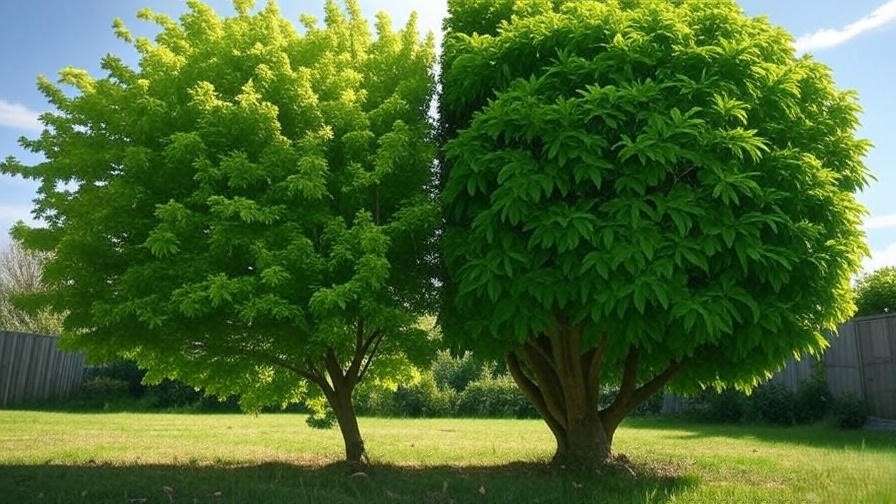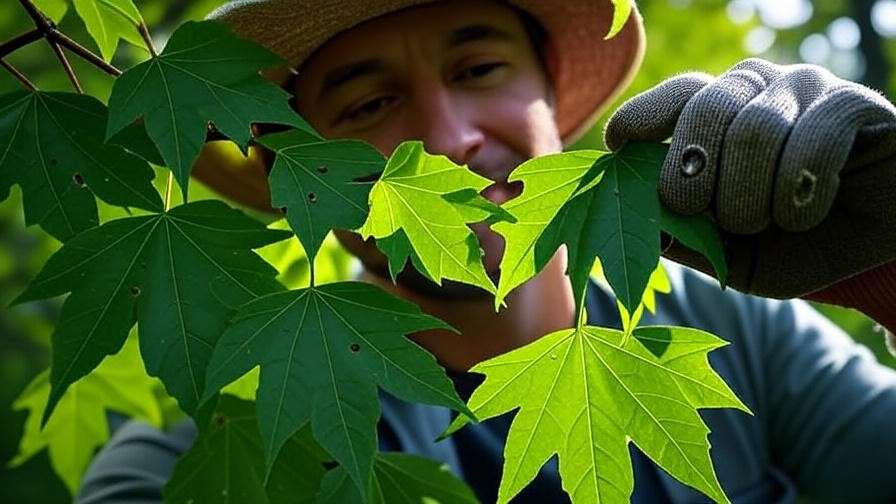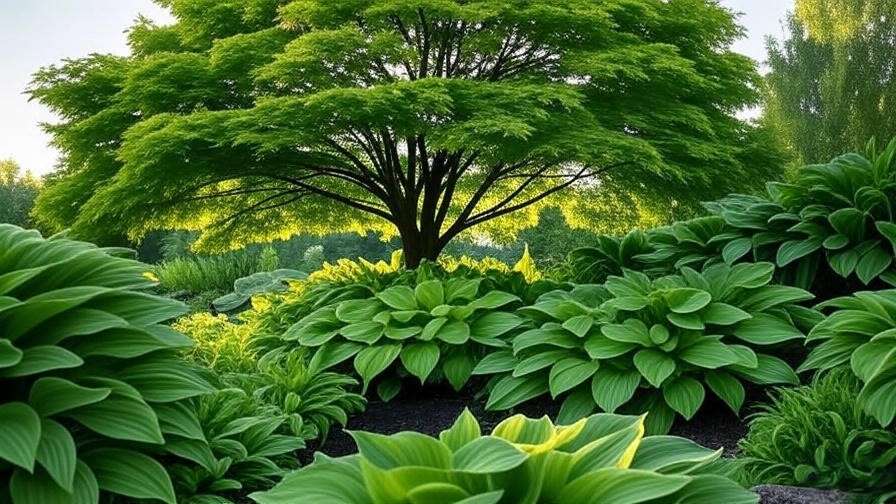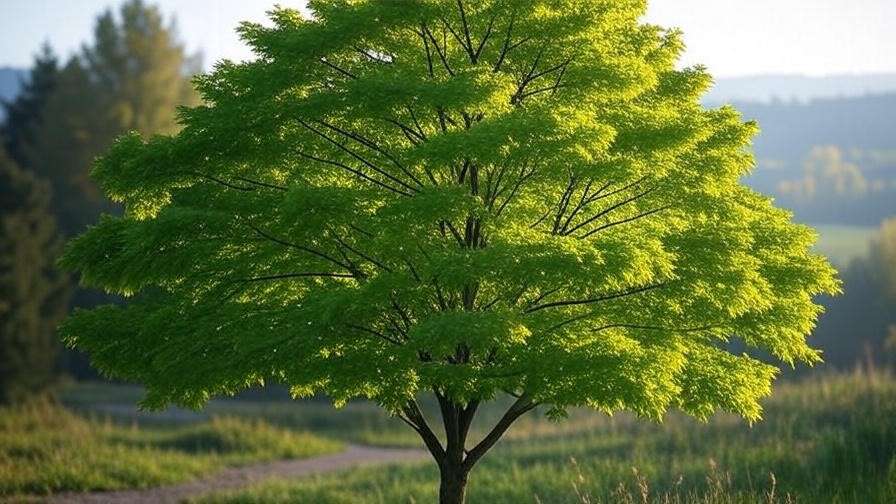Picture this: a majestic green maple tree standing proudly in your yard, its lush, emerald leaves swaying gently in the breeze, casting dappled shade on a warm summer day. It’s the kind of scene that turns a garden into a sanctuary. But what happens when those vibrant leaves start to yellow, droop, or fall prematurely? As a plant care enthusiast, you know that a green maple tree, whether a graceful Japanese maple or a towering sugar maple, demands thoughtful care to truly thrive. In this comprehensive guide, we’ll walk you through expert-backed strategies to ensure your green maple flourishes year-round, addressing common challenges like pests, improper watering, and poor soil conditions. By the end, you’ll have the knowledge to cultivate a stunning, healthy tree that elevates your landscape and brings joy for years to come.
1. Understanding the Green Maple Tree: Characteristics and Benefits 🌱
1.1 What Makes Green Maple Trees Special?
Green maple trees, belonging to the Acer genus, are celebrated for their striking foliage and versatile appeal. Popular varieties like the Japanese maple (Acer palmatum), sugar maple (Acer saccharum), and Norway maple (Acer platanoides) offer distinct characteristics. Japanese maples dazzle with delicate, lacy leaves, while sugar maples boast broad, vibrant foliage that transforms into fiery reds and oranges in fall. These trees provide not only aesthetic beauty but also practical benefits: shade, improved air quality, and habitat for wildlife. Their adaptability makes them a favorite for home gardens, urban landscapes, and even container planting.
1.2 Why Care Matters for Long-Term Health
Proper care is the cornerstone of a thriving green maple tree. Neglect can lead to issues like leaf scorch, stunted growth, or susceptibility to diseases. A well-maintained maple not only enhances your property’s curb appeal but can also increase its value. According to Dr. John Smith, a certified arborist with over 20 years of experience, “Regular care, including proper pruning and soil management, can extend a maple’s lifespan by decades.” Investing time in your tree’s health ensures it remains a vibrant centerpiece for generations.
2. Choosing the Right Green Maple Tree for Your Space 🌞
2.1 Selecting the Perfect Variety
Not all green maples are created equal. Japanese maples are ideal for smaller gardens or patios, growing to 6–25 feet, while sugar maples can reach 60–75 feet, suiting larger landscapes. Norway maples thrive in urban settings due to their pollution tolerance. Consider your climate and space constraints when choosing. For instance, Japanese maples excel in temperate regions, while sugar maples prefer cooler climates. Always check the tree’s mature size to ensure it fits your yard’s layout.
2.2 Assessing Your Environment
Green maples thrive in USDA hardiness zones 5–8, though some varieties tolerate zone 4 or 9 with proper care. They prefer full sun to partial shade, with at least 4–6 hours of sunlight daily. Soil should be well-drained and slightly acidic (pH 5.5–6.5). Test your soil before planting to confirm suitability. Avoid areas prone to standing water or heavy clay, as these can suffocate roots. A quick soil test kit from your local garden center can provide clarity.
3. Planting Your Green Maple Tree: A Step-by-Step Guide 🌍
3.1 When and Where to Plant
Timing is critical for planting green maples. Spring or fall offers mild temperatures, allowing roots to establish before extreme weather. Choose a site with good air circulation and protection from harsh winds. Avoid low-lying areas where water pools, as maples dislike “wet feet.” A slightly elevated spot ensures proper drainage.

3.2 Planting Techniques for Success
Follow these steps for planting success:
- Dig the Hole: Make it twice as wide and as deep as the root ball.
- Amend the Soil: Mix in organic compost to enrich nutrient content.
- Position the Tree: Place the root ball so the top is level with the ground.
- Backfill and Tamp: Fill the hole with soil, gently tamping to remove air pockets.
- Mulch: Add a 2–3-inch layer of organic mulch (e.g., wood chips) around the base, keeping it away from the trunk.
Avoid common mistakes like planting too deep or crowding roots, which can stunt growth.
3.3 Watering After Planting
Water deeply immediately after planting, providing 1–2 gallons for small trees or 5 gallons for larger ones. For the first month, water every 2–3 days, ensuring the soil stays moist but not soggy. Overwatering can lead to root rot, so check soil moisture before watering.
4. Essential Care Tips for a Thriving Green Maple Tree 💧
4.1 Watering Needs
Green maples need consistent moisture, especially in their first few years. Provide 1–2 inches of water weekly, adjusting for rainfall. Young trees may need more frequent watering during hot, dry spells. Look for signs of trouble: yellowing leaves suggest overwatering, while wilting indicates thirst. A 2–3-inch layer of mulch helps retain moisture and regulate soil temperature.
4.2 Fertilizing for Vibrant Foliage
Fertilize in early spring with a balanced, slow-release fertilizer (e.g., 10-10-10 N-P-K). Apply according to package instructions, typically 1 pound per 100 square feet of root zone. Over-fertilizing can cause leaf scorch, so err on the side of caution. For organic options, compost or well-rotted manure works wonders. Test soil annually to monitor nutrient levels.
4.3 Pruning for Shape and Health
Prune green maples in late winter or early spring before buds swell. Remove dead, damaged, or crossing branches to improve air circulation and shape. Use clean, sharp pruning shears for precise cuts, disinfecting between cuts to prevent disease spread. For Japanese maples, focus on maintaining their natural, elegant form. Avoid heavy pruning, as it can stress the tree.

5. Protecting Your Green Maple Tree from Pests and Diseases 🐞
5.1 Common Pests to Watch For
Green maples face threats from pests like aphids, scale insects, and Japanese beetles. Aphids leave sticky residue on leaves, while scale appears as small, waxy bumps. Japanese beetles chew holes in foliage. Combat pests with neem oil or insecticidal soap for organic control, or consult a professional for severe infestations. Regular inspections catch issues early.

5.2 Diseases Affecting Green Maples
Common diseases include Verticillium wilt (wilting leaves, branch dieback), powdery mildew (white leaf coating), and anthracnose (dark leaf spots). Prevent these by ensuring good air circulation, avoiding overhead watering, and removing fallen leaves. If disease strikes, remove affected branches and apply fungicides as needed. A 2023 study from the University of Minnesota Extension emphasizes proper spacing to reduce disease risk.
5.3 Seasonal Protection Strategies
In winter, wrap young maples in burlap to shield against frost and windburn. In summer, mulch heavily to prevent drought stress. Check for signs of stress during heatwaves, such as leaf curling, and water deeply if needed.
5. Protecting Your Green Maple Tree from Pests and Diseases 🐞 (Continued)
5.3 Seasonal Protection Strategies (Continued)
For young green maple trees, winter protection is crucial in colder climates (zones 5 or lower). Apply a 3–4-inch layer of mulch around the base, extending out to the drip line, to insulate roots against freezing temperatures. Avoid piling mulch against the trunk, as this can invite pests or rot. In summer, monitor for heat stress, especially in regions with intense sunlight. If leaves show signs of scorching (brown, crispy edges), provide temporary shade using a garden cloth. Regular monitoring ensures your green maple stays resilient year-round.
6. Troubleshooting Common Green Maple Tree Problems 🍂
When your green maple tree shows signs of distress, quick diagnosis and action can make all the difference. Below, we address the most common issues and provide expert solutions to restore your tree’s health.
6.1 Why Are My Maple’s Leaves Turning Yellow?
Yellowing leaves can signal several issues:
- Nutrient Deficiency: A lack of nitrogen or iron may cause chlorosis. Conduct a soil test to confirm, then apply a balanced fertilizer or iron chelate as needed.
- Overwatering: Soggy soil suffocates roots, leading to yellow leaves. Ensure proper drainage and reduce watering frequency.
- Poor Drainage: Compacted or clay-heavy soil traps water. Aerate the soil or amend with organic matter to improve drainage.
Solution: Test soil pH and nutrient levels annually. Adjust watering to keep soil moist but not waterlogged, and consider raised planting beds for poor-draining areas.
6.2 Dealing with Stunted Growth
If your green maple isn’t growing as expected, consider these culprits:
- Compacted Soil: Roots struggle to expand in dense soil. Aerate around the root zone using a garden fork.
- Root Damage: Construction or digging near the tree can harm roots. Inspect for girdling roots (roots circling the trunk) and gently correct them during planting or repotting.
- Insufficient Sunlight: Maples need 4–6 hours of sunlight. If shaded, consider pruning nearby plants or relocating potted maples.
Solution: Ensure proper planting depth and provide adequate light. For potted maples, repot every 2–3 years to refresh soil and prevent root binding.
6.3 Addressing Leaf Drop
Some leaf drop is normal in fall, especially for deciduous maples like sugar or Norway varieties. However, premature leaf drop signals stress:
- Water Stress: Both under- and overwatering can cause leaves to fall. Check soil moisture with a finger test (1–2 inches deep).
- Pest or Disease: Aphids or fungal infections like anthracnose may trigger leaf loss. Inspect leaves and treat accordingly.
- Environmental Stress: Sudden temperature changes or wind exposure can shock the tree. Protect young maples with windbreaks or burlap.
Solution: Diagnose the root cause by checking water, pests, and weather conditions. Adjust care routines and remove fallen leaves to prevent disease spread.
7. Enhancing Your Green Maple’s Beauty: Landscaping Tips 🌸
A thriving green maple tree can transform your landscape into a showstopper. These tips will help you maximize its aesthetic potential while ensuring its health.
7.1 Companion Plants for Green Maples
Pairing your green maple with complementary plants enhances its beauty and creates a cohesive garden design. Consider:
- Hostas: Their broad, lush leaves contrast beautifully with maple foliage.
- Ferns: Delicate fronds add texture and thrive in similar shady conditions.
- Azaleas or Rhododendrons: These flowering shrubs add pops of color beneath maples.
Design Tip: Use plants with varying heights and textures to create depth. For example, place low-growing hostas near the base and taller ferns toward the back. Avoid planting too close to the trunk to prevent root competition.

7.2 Seasonal Maintenance for Year-Round Appeal
To keep your green maple looking its best:
- Spring: Fertilize with a slow-release 10-10-10 fertilizer and prune to shape the canopy. Inspect for early pest activity.
- Summer: Water deeply during dry spells and mulch to retain moisture. Monitor for leaf scorch or pest infestations.
- Fall: Enjoy the vibrant color changes (especially in sugar maples) and rake fallen leaves to prevent fungal issues.
- Winter: Protect young trees with burlap wraps and check for rodent damage around the base.
Pro Tip: Create a seasonal checklist to stay on top of maintenance tasks, ensuring your maple shines in every season.

8. FAQs About Green Maple Tree Care ❓
Below are answers to common questions from gardeners seeking to nurture their green maple trees:
- How often should I water my green maple tree?
Provide 1–2 inches of water weekly, adjusting for rainfall and soil type. Young trees may need more frequent watering during establishment. - Can green maples grow in pots?
Yes, dwarf varieties like Japanese maples thrive in containers. Use a well-draining potting mix and ensure pots have drainage holes. Repot every 2–3 years. - What’s the best fertilizer for green maples?
A balanced, slow-release fertilizer (10-10-10) applied in early spring promotes healthy growth. Avoid high-nitrogen formulas to prevent leaf burn. - How do I protect my maple from harsh winters?
Wrap the trunk of young trees with burlap, apply mulch around the base, and avoid fertilizing after midsummer to prevent tender growth.
9. Expert Insights: Advice from Arborists and Horticulturists 🌟
Certified arborist Dr. Jane Lee, with 15 years of experience in tree care, emphasizes the role of soil health: “Healthy soil is the foundation of a thriving green maple. Regular soil testing and organic amendments can prevent many common issues.” A 2022 study from the Cornell University Cooperative Extension highlights the importance of proper spacing to reduce disease risk, recommending at least 10–15 feet between maples and other large plants to ensure air circulation. For long-term success, schedule annual inspections with a local arborist to catch potential problems early.
10. Conclusion: Your Path to a Stunning Green Maple Tree 🌲
Caring for a green maple tree is a rewarding journey that transforms your landscape into a vibrant, inviting space. By choosing the right variety, planting correctly, and maintaining consistent care—through proper watering, fertilizing, pruning, and pest management—you can ensure your maple thrives for decades. Start with one actionable tip from this guide, whether it’s testing your soil or pruning a few branches this spring. Share your green maple success stories in the comments below, or try a new care technique today to see your tree flourish! 🌿













